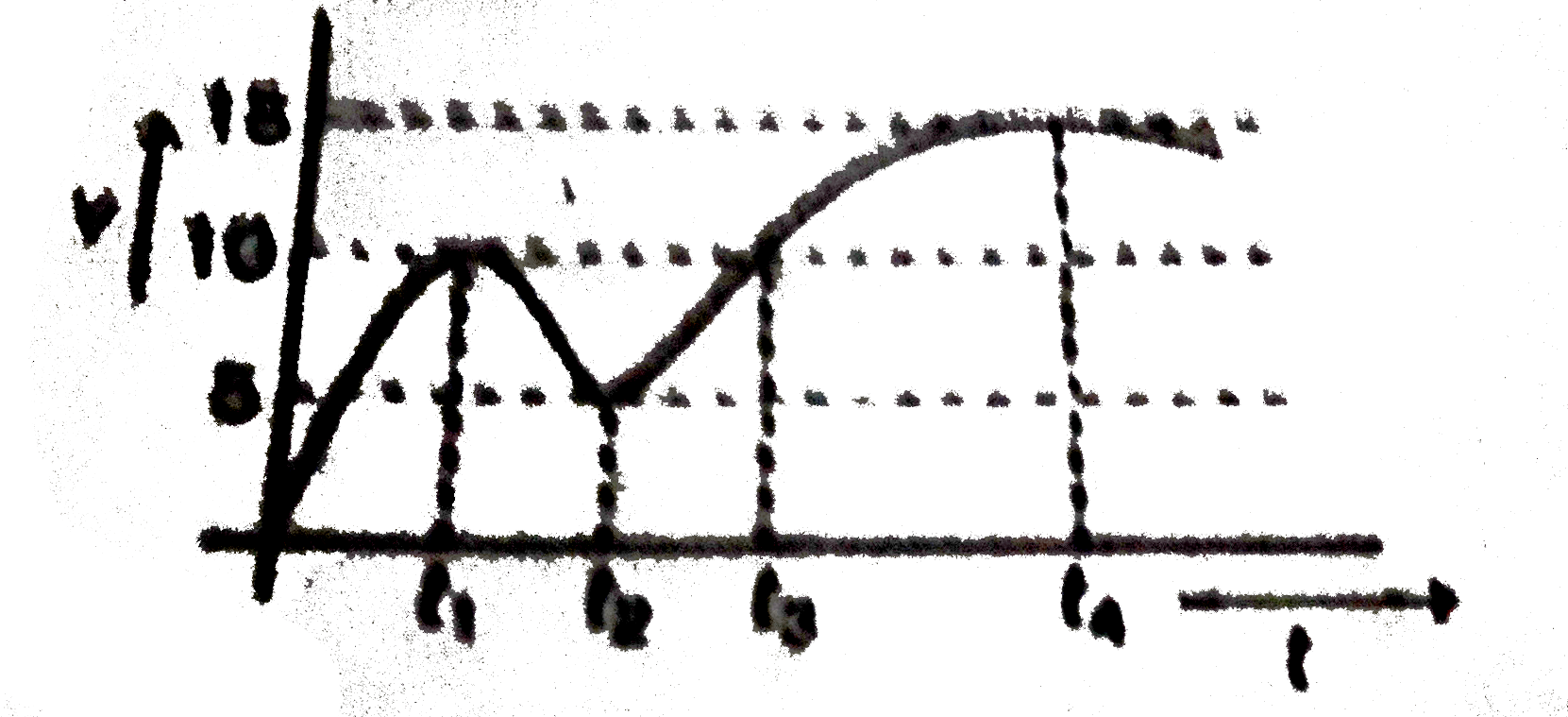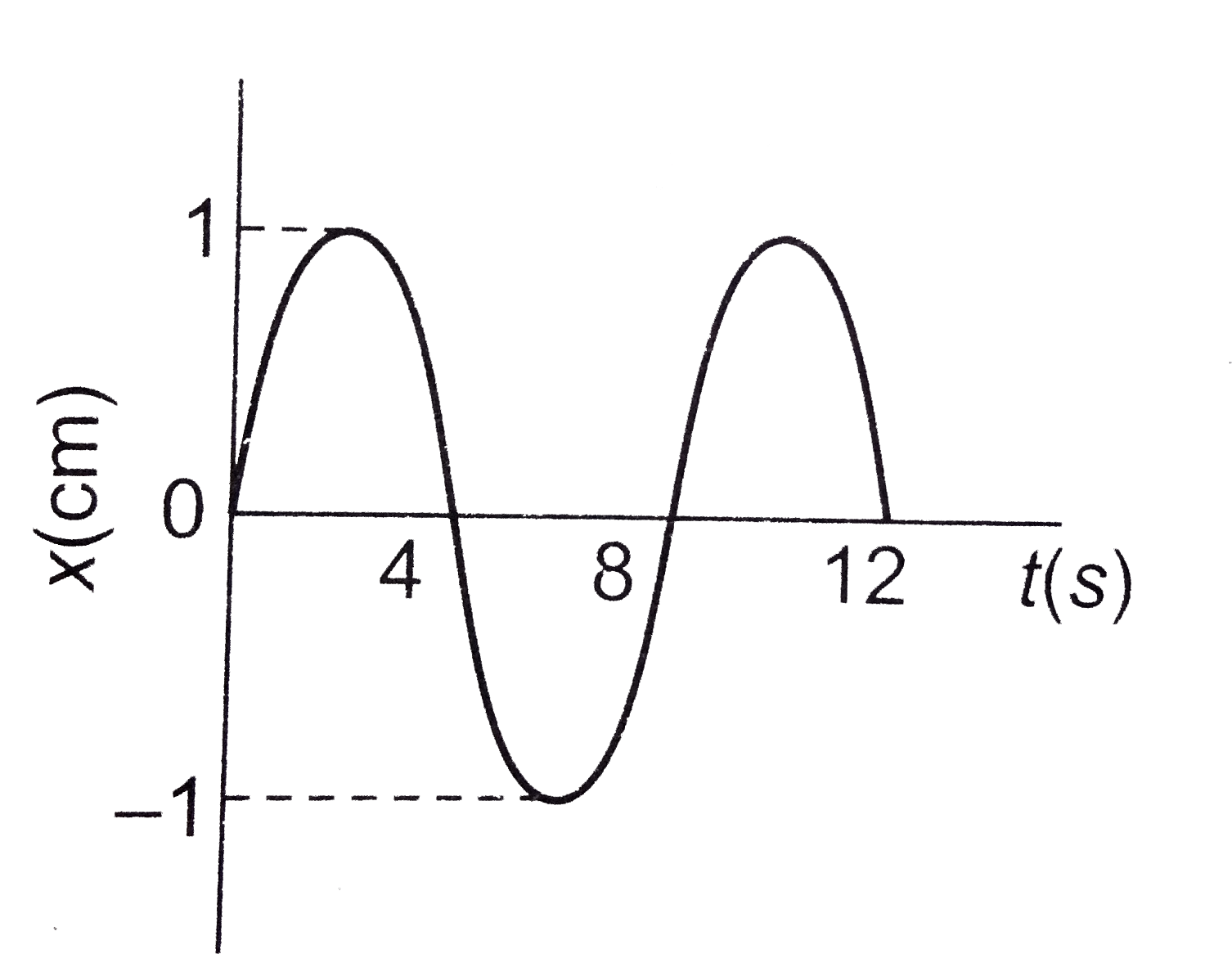Assertion: x−t graph, for a particle undergoing rectilinear motion, can be as shown in the figure.
Reason: Infinitesimal changes in velocity are physically possible only in infinitesimal time.

Statement -1 is True, Statement-2 is Ture, Statement-2 is a correct explanantion for Statement-1.
Statement-1 is Ture, Statement-2 is Ture, Statement-2 is Not a correct explanantion for Statement-1.
Statement-1 is True, Statement-2 is False.
Statement-1 is False, Statement-2 is True.
The correct Answer is:D
At the high point of the graph velocity (slope of x−t curve) changes suddenly from a positive to a negative value. This is physically impossible.
Similar Questions
Knowledge Check
- Question 1 - Select One
The x−t graph of a particle undergoing simple harmonic motion is shown in figure. Acceleration of particle at t=4/3s is
 A√332π2cm/s2B−π232cm/s2Cπ232cm/s2D−√332π2cm/s2
A√332π2cm/s2B−π232cm/s2Cπ232cm/s2D−√332π2cm/s2 - Question 2 - Select One
v - t graph for rectilinear motion is given as shown in the figure. Match the column on the basis of the v-t graph.

 Ap−d,q−b,c,r−d,s−aBp−a,q−c,d,r−b,s−aCp−b,q−b,c,r−b,s−aDNone of these
Ap−d,q−b,c,r−d,s−aBp−a,q−c,d,r−b,s−aCp−b,q−b,c,r−b,s−aDNone of these - Question 3 - Select One
Veolocity-time graph of a particle undergoing rectilinear motioin is plotted upto t=t4 as shown in the figure. Average acceleration of the particle is zero in the time internal between
 A0 and t1Bt1 and t2Ct1 and t3Dt3 and t4
A0 and t1Bt1 and t2Ct1 and t3Dt3 and t4
Veolocity-time graph of a particle undergoing rectilinear motioin is plotted upto t=t4 as shown in the figure. Average acceleration of the particle is zero in the time internal between
 View Solution
View SolutionThe x-t graph of a particle undergoing SHM is as shown in figure. The acceleration of the particle at t=2/3 is
 View Solution
View SolutionThe x−t graph of a particle undergoing simple harmonic motion is shown below. The accelertion of the particle at t=4/3s is
 View Solution
View SolutionThe x-t graph of a particle undergoing simple harmonic motion is shown below. The acceleration of the particle of t=4/3s is
 View Solution
View SolutionThe acceleration - time graph for a particle moving along x - axis is shown in figure, If the initial velocity of particle is −5m/s, the velocity at t = 8 s is
 View Solution
View Solution



